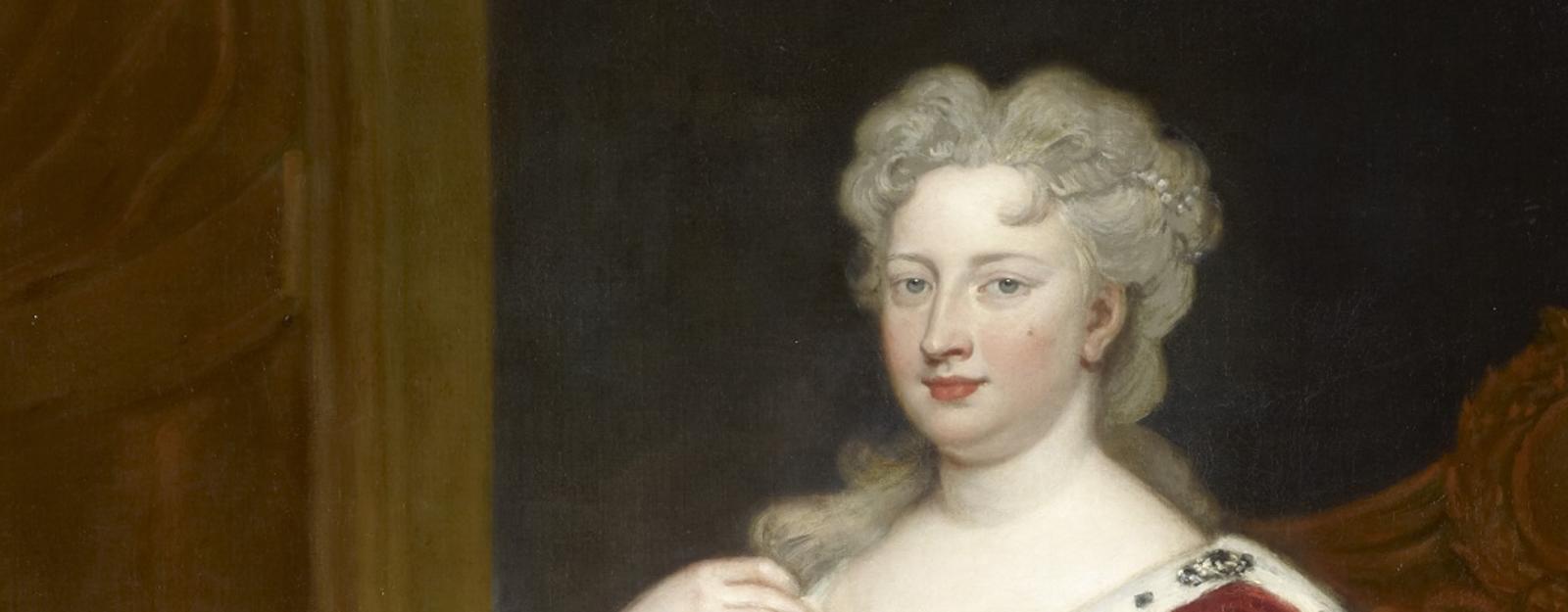Queen Caroline of Great Britain (1683-1737)

- Born 1683, Ansbach [Germany]
- Died 1737, St James's Palace
Caroline was the daughter of John Frederick, Margrave of Brandenburg-Ansbach, who died when she was three. Her mother, Eleonore Erdmuthe of Saxe-Eisenach married again (twice) but died when Caroline was thirteen. Caroline and her brother eventually moved to the guardianship of Frederick I of Prussia, and his wife Sophia Charlotte (sister of George I). Caroline married George Augustus, the future George II, in 1705 and moved to England with him in 1714 when he became Prince of Wales. She became Queen on his accession in 1727.
Caroline spent her teenage years at the Prussian court in Berlin, renowned for its patronage of artists and architects and its lively intellectual life. Caroline was surrounded by a circle of writers and intellectuals, and shared with them a taste for the visual arts. Her intelligence and keen interest in science and art was recognised in her own lifetime. The French philosopher, Voltaire, said of her that she was 'born to encourage the arts and the well-being of mankind'. One of her building projects in the garden at Richmond in the early 1730s displayed five busts of leading English scientists and philosophers, demonstrating her sustained interest in these areas of scholarship.
Caroline's interest in art overlapped with her interest in history and several of her early purchases and displays of paintings demonstrated an interest in the portraits of previous monarchs. She acquired portraits of Tudor kings and queens, and hung them, along with works already in the collection, in her private rooms at Kensington Palace. She also commissioned paintings on historical subjects such as the life of Henry V. While this may demonstrate an interest in creating visual continuity of kingship, legitimising the rule of the House of Hanover, it was clearly also a personal and intellectual interest as well. Caroline later commissioned Rysbrack in 1735 to make a series of 11 busts of medieval and Tudor monarchs for her new library at St James's (although only three now survive).
One of the greatest treasures in the Royal Collection is the collection of Holbein drawings. Caroline had rediscovered these and had them taken out of their bound volume and framed so that she could display them. While not ideal in terms of conservation, this demonstrated a keen awareness of the quality of the works. She is likely to have been behind the acquisition of the Holbein portrait of Sir Henry Guildford during the reign of George II.
Caroline was also a keen collector of miniatures, cameos and intaglios again with an excellent eye for quality of execution and interesting or historical subject matter.
Although her building and landscaping commissions were relatively few, she commissioned Charles Bridgeman to redesign the gardens at Richmond, and William Kent to build Merlin’s Cave (a thatched Gothic structure) and a hermitage, neither of which survives. She also commissioned Kent to erect a library building at St James’s (1736–7).
Consort of George II